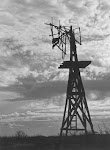My Daddy, Dan H. Griffin of Edmond and Oklahoma City, OK. Posting his obituary here at Father's Day, along with a few comments made by minister at Daddy's funeral.

DAN HARRELL GRIFFIN, 85, died Thursday, September 30, 1993, at Edmond. He was born before statehood at Edmond, OK, October 26, 1907, oldest son of early settlers of Oklahoma Territory, Charlie and Hattie Griffin. He was preceded in death by brothers, Forrest Lynn (Jiggs) Griffin and Charles Warren (Chick) Griffin, an wife of 55 years, Bess Eloise Avera Griffin.
(I have edited out list of living descendants: Three daughters, one son; nine grandchildren; and now fifteen great grandchildren.)
Mr. Griffin’'s mother, Hattie McGill, was an 89er, daughter of Daniel Patrick McGill, who staked a claim at Deer Creek during the Run of '‘89. Paternal grandmother, Lizzie Terry Griffin, and family settled near Edmond in 1890. He grew up in Edmond and in Cotton County, graduating from Normal Highschool in Edmond, and then from Central State Teachers’ College in Edmond in 1932, with a degree in Industrial Arts Education. For nearly 14 years, he traveled throughout several states working for Phillips Petroleum Co. on seismograph drilling crews. With the establishment of Griffin Drilling Co. in 1946, he and his family returned to Edmond, then to Oklahoma City in 1950. He was always personally involved with every phase of the family business even after retirement and to the final weeks of his life.
He was a member of Edmond Masonic Lodge, #37, Scottish Rite Consistory in Guthrie, and a member of the India Temple Shrine in Oklahoma City. He was an avid sports fan, bird watcher, flower gardener, photographer, and constant student of every type of earth and natural science, geography and history. Sharing these loves with his family, he had traveled to 41 states, Canada, Mexico, and Cuba.
During the past few months he was a resident of Teal Ridge Retirement Community at Edmond where he will be missed by many friends.
Services will be Monday, October 4, at 10:30 a.m. Baggerly Funeral Home in Edmond, with burial at Memorial Park Cemetery. In lieu of flowers, donations may be made to the Oklahoma Medical Research Foundation.
Notes from Minister for Dan Griffin's funeral:
Dan... Grandaddy
Determined, persevering, integrity, never a quitter, his word was his bond.
Always interesting and interested, more to learn.
Natural teacher, knew much information.
Telling the young guide, and the tour crowd, in Capitol rotunda about the acoustic bounce.
When he took kids on vacation, it was "industry on Parade", touring factories, dams, etc.
Explaining scientific principles to family.
Multi-faceted, world class student of everything.
Wanted everyone to learn how to do well.
For brief period, a wealthy man, but not very materialistic.
Told future son in law: "Don't marry ___ for my money, I intend to spend it all."
But he didn't ---Generous man.
As a husband, he was the Boss.
As a father, the authority.
As a father in law, a role model and an affirming and generous man.
As a boss, all business to employess, but made lasting friendships with many.
As a Grand Daddy, lively and fun, showing you how to do it. Wanted the grandchildren busy.
OU fan - big time - red jacket - football and basketball.
Type A personality behind wheel of a car.
Taught sharing and giving, very practical. Always picked up the check.
Mad a bird trap (for birds he didn't want in his yard). Took them away opened trunk and bluejays and sparrows flew. Leaving the birds he loved and fed, watching from his office window.
Word person, oral and written communication. Frustration in later years when a stroke left him with problems of communication.
Enjoyed life, did what he wanted to do, was finished.
Miss you, Daddy.








